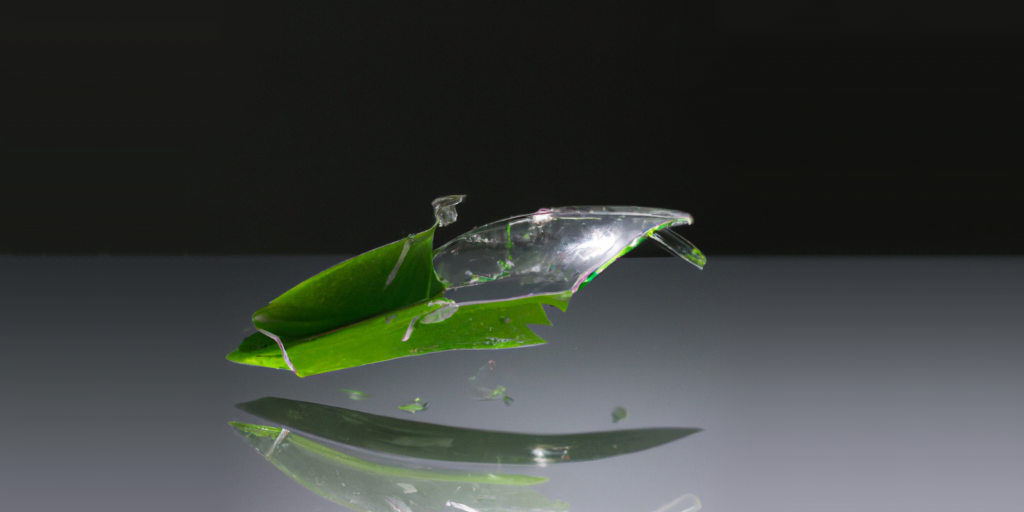Is the inside of a plant cell more like a liquid or a solid? While this may sound like an odd question, research carried out at the University of Amsterdam demonstrates it can be either, depending on how much light you shine on it. Chloroplasts within plant cells constitute an active form of matter that undergoes dramatic phase transitions.

The question of how plants sense and respond to their environment has fascinated scientists and philosophers since ancient times. More than two millennia ago, Plato wrote in his Timaeus that plants have a “soul” that experiences “sensation, pleasure, pain, and desire” while lacking “judgment and intelligence”.
To move, or not to move
While modern scientists will mostly agree with this poetically expressed assessment, they will disagree with Plato’s follow-up statement that plants are “deprived of the power of self-movement”; being rooted does not mean that plants are unable to move. Think of young sunflowers tracking the sun each day, or a house plant growing toward a sunny window.
On a much shorter time scale, the chloroplasts within plant cells will quickly move in response to a change in light intensity. Chloroplasts are the green components of plant cells that conduct photosynthesis, the process of turning sunlight into chemical energy. They are not stationary within the cell, being able to use proteins within their membranes to move around within the cytoplasm.
In low-light conditions, chloroplasts will spread out to capture the maximum amount of light. However, over-exposure to bright light will damage them, a fate they avoid with fast escape movements. Thus, chloroplast motion simultaneously maximizes photosynthetic performance while minimizing photo-damage.

Glassy behaviour
Despite decades of research into this intracellular motion, there are still many open questions about how chloroplasts organise themselves collectively. University of Amsterdam researchers Nico Schramma, Cintia Perugachi Israëls and Maziyar Jalaal decided to study this behaviour from a physics perspective.
“Our results show that in dim light, chloroplasts form a monolayer which exhibit glass-like features. This demonstrates a surprising connection between this biological system and the rich field of glass physics,” explains Schramma. More than just a window material, a glass is a rigid phase of matter made up of particles that are densely packed but not neatly arranged.
Unlike simple atoms (which are truly inanimate), chloroplasts can use energy to generate their own movement. Additionally, chloroplasts are affected by and interact with their unique intracellular environment. This makes this glassy phase an exciting new form of ‘active’ matter.
Being in a glassy state is useful for ensuring that the most possible light is collected in low-light conditions, because the chloroplasts are ideally positioned. When exposed to bright light, this glassy state quickly ‘melts’ into a liquid in which chloroplasts move around rapidly.

Close to a transition
By tracking and analysing the light-dependent movements of chloroplasts in Elodea densa plants, and comparing this to a newly developed mathematical model, the researchers uncovered that the chloroplasts are tuned to be close to the transition between a glassy and liquid state.
A tell-tale sign of the proximity to this transition is that even in the low-light glassy state, not all chloroplasts sit still. Every now and then, a chloroplast will suddenly burst from its position, passing several others before getting stuck again. In some cases, this burst of movement spurs on a chain of coordinated movements in nearby chloroplasts.
“Being close to a glass transition enables chloroplasts to quickly switch to a fluid-like phase for efficient light-avoidance motion,” concludes Schramma. Besides their biological relevance, the light-dependent dynamical phases of the chloroplasts in Elodea densa constitute an intriguing model system for future research on dense active and living matter.
Publication
Nico Schramma, Cintia Perugachi Israëls and Maziyar Jalaal, Chloroplasts in plant cells show active glassy behavior under low light conditions. PNAS 120 volume 3 (2023) e2216497120.
